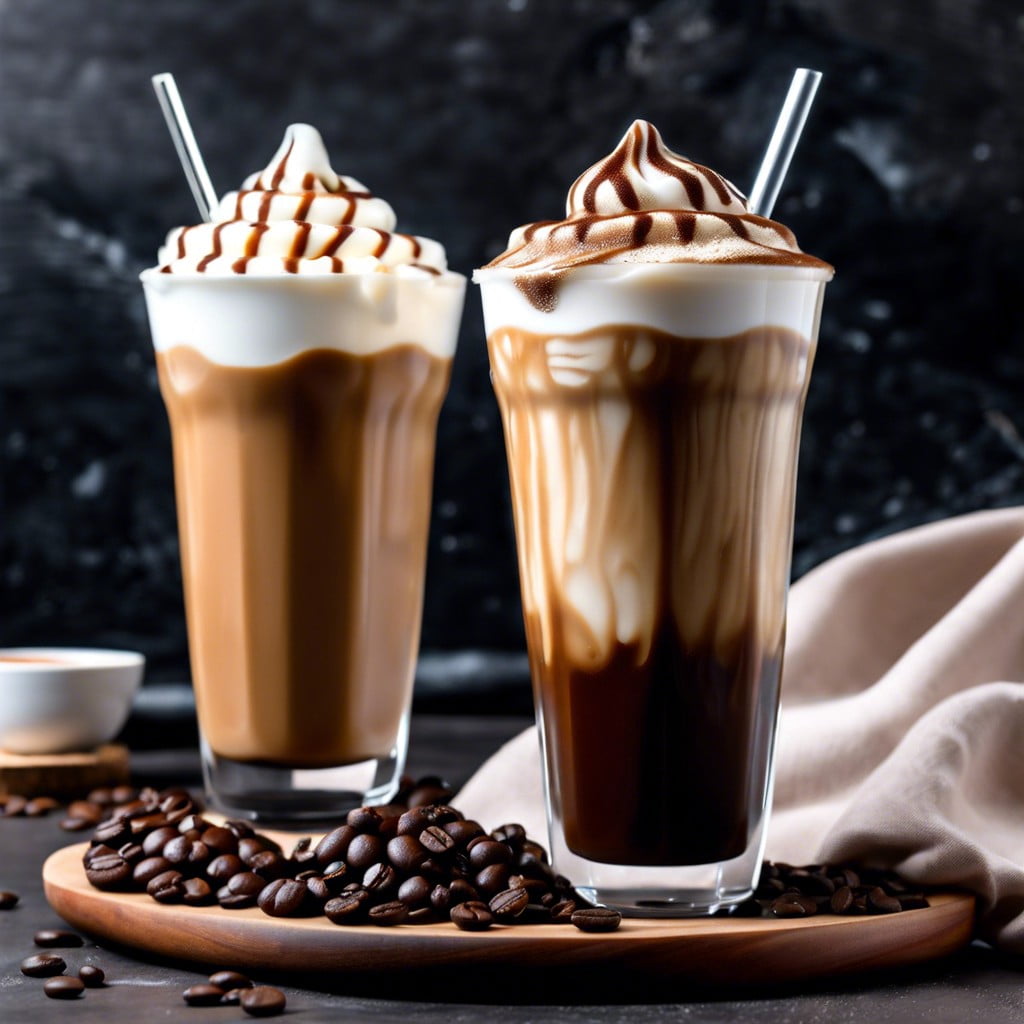Learn how to make cold foam for coffee in just a few simple steps.
Ingredient Notes and Substitutions

To kick off your cold foam creation, opting for non-fat or low-fat milk yields the best froth due to its higher protein content. However, for those partial to a richer taste or with dietary preferences, alternatives like oat, almond, or soy milk work well. Each of these non-dairy choices brings a subtle flavor difference, enhancing your drink uniquely.
You could switch up plain old milk with sweet cream or heavy cream to dial up the indulgence. Remember, using full-fat dairy or alternatives may affect the foam’s lightness and volume. Sweeteners or flavored syrups are also great additions if a hint of sweetness is what you’re after, but they too can influence the frothing outcome.
Temperature matters; for cold foam, ensure your milk or substitute is well chilled. This helps in achieving that perfect, creamy topping we all love on our cold brews or iced lattes.
Equipment Required
To create perfect cold foam, you’ll need a few key pieces of equipment:
A milk frother stands as the easiest tool for the job. Opt for an electric frother if you prefer convenience and consistency. For those who relish a bit of a workout, a manual hand pump frother does the trick.
No frother? No problem! A French press can be a great alternative. Simply pour your cold milk or cream into the press and pump vigorously until the milk doubles in volume and achieves that creamy, frothy texture.
For precision and flexibility, consider using a whisk or an immersion blender. These tools are especially useful when you’re working with larger quantities or seeking finer control over the foam’s consistency.
Keep it simple and accessible. Even a tightly sealed jar works. Just shake it vigorously until the milk becomes frothy, though this method may require more effort and less predictability in texture.
Step-by-Step Instructions for Making Cold Foam
Start with chilled, low-fat milk or a plant-based alternative. Dairy foams better due to proteins, so for non-dairy, opt for barista-specific versions designed for foaming.
Pour desired amount, usually 1/4 to 1/2 cup, into the cold foam blender or milk frother. Ensure it’s specifically meant for cold foaming—regular frothers may not achieve the same texture.
If using a manual frother, pump vigorously for 30 to 45 seconds. The motion introduces air, creating a fluffy, light foam. For electric frothers or blenders, just press the button for cold foam, typically taking about a minute.
Once the foam reaches a creamy consistency, it’s ready to scoop on top of your cold brew or iced coffee. Act quickly to maintain its airy texture. Avoid shaking or stirring, as it can deflate the foam.
Feel free to experiment with different milks and sweeteners, tracking what works best for your taste preferences.
How to Make Sweet Cream Cold Foam
Sweet cream cold foam adds a rich, velvety layer to your iced coffee, balancing the bold flavors with a touch of creamy sweetness. This concoction combines heavy cream and vanilla syrup, which can be adjusted to control sweetness and flavor intensity.
Begin by mixing two parts heavy cream to one part 2% milk. This blend ensures the foam is both light and sufficiently rich. Add a teaspoon of vanilla syrup for every half cup of cream mixture; this enhances the foam’s flavor, making it a delightful addition to any cold brew.
Use a milk frother or hand mixer set on low to aerate the mixture until it’s smooth and frothy, about 30 seconds. The key is to achieve soft peaks that hold their shape but remain pourable.
Experiment with the ratios depending on your preference for sweetness and texture. A dash of sea salt could elevate the cream’s flavor profile, offering a sophisticated twist to your usual coffee routine.